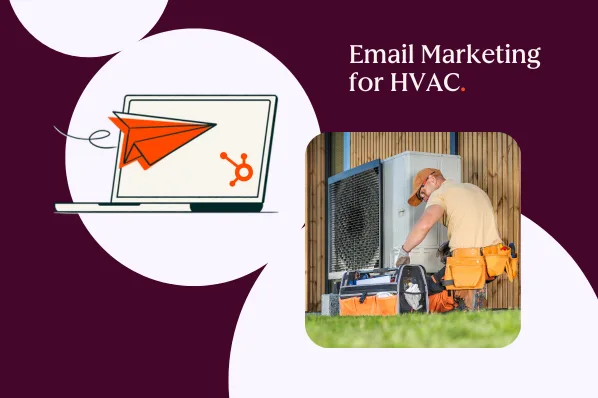Top 8 Email Marketing Tools for HVAC Companies in 2025

▼ Summary
– Email marketing provides exceptional ROI for HVAC companies, generating $36-40 for every $1 spent with an average 4200% return.
– HVAC-specific email marketing tools automate customer communication through appointment reminders, seasonal campaigns, and equipment replacement nurturing sequences.
– Effective platforms segment customers by equipment age, service history, and property type to deliver targeted, relevant messages.
– Key features for HVAC email marketing include CRM integration, mobile-optimized templates, revenue tracking, and automation workflows for customer journeys.
– HubSpot stands out as a top choice for HVAC companies, combining email marketing with integrated CRM and showing documented success with companies like Viessmann.
For HVAC companies navigating seasonal demand swings and intense local competition, maintaining consistent customer communication presents an ongoing challenge. Email marketing delivers an exceptional return on investment, generating approximately $36 to $40 for every dollar spent, making it one of the most cost-effective channels available to heating and cooling businesses. This approach helps keep your company top-of-mind during slower periods while nurturing long-term customer relationships that lead to recurring revenue.
Unlike generic broadcast advertising, effective HVAC email marketing involves sending targeted campaigns based on customer equipment age, service history, and property characteristics. These personalized communications might include automated appointment reminders, seasonal maintenance promotions, filter replacement alerts, and equipment replacement nurturing sequences. The ultimate goal involves transforming single service calls into lasting maintenance contracts that provide year-round financial stability.
Several key benefits make specialized email marketing software invaluable for HVAC contractors. Automation capabilities ensure consistent customer communication regardless of seasonal fluctuations, with systems triggering maintenance reminders and service alerts based on actual equipment data. Advanced segmentation allows you to categorize customers by system type, service history, and property classification, ensuring relevant messaging reaches each specific group.
Comprehensive analytics track which campaigns actually drive appointments and revenue rather than simply monitoring opens and clicks. This precise measurement enables continuous optimization of your marketing efforts. Additionally, email nurturing sequences effectively convert one-time service customers into maintenance contract holders, creating predictable recurring income streams. Integration with existing business tools like scheduling software and CRM systems ensures customer data remains synchronized across all platforms.
When evaluating email marketing platforms, HVAC companies should prioritize these essential features:
Customer segmentation and list management capabilities allow precise targeting based on equipment specifications and service history. Appointment-focused automation workflows enable sophisticated customer journey mapping from initial contact through years of service relationship. Mobile-optimized templates ensure professional presentation across all devices, crucial since most emails now open on smartphones.
CRM integration provides complete customer visibility by combining communication history with service records. Pre-built templates designed for service businesses significantly reduce campaign creation time. Finally, revenue-focused analytics demonstrate exactly which emails generate appointments and sales rather than merely tracking engagement metrics.
Multiple platforms cater specifically to HVAC marketing needs:
- HubSpot Marketing Hub combines powerful email automation with an integrated CRM, enabling sophisticated segmentation based on equipment age and service history. The platform offers a free plan with basic functionality and scales upward as business needs expand.
- ServiceTitan Marketing Pro operates natively within the field service management platform, eliminating data synchronization challenges. This solution automatically updates customer segments based on equipment age and service records while providing precise revenue attribution.
- Jobber integrates with Mailchimp to provide email marketing capabilities while maintaining separate platforms for field management and campaign creation.
- Mailchimp serves as an accessible starting point for smaller HVAC businesses, offering user-friendly templates and basic automation at budget-conscious pricing levels.
- AWeber delivers robust automation features with advanced customer tagging systems that enable sophisticated follow-up sequences based on subscriber behavior.
- ActiveCampaign provides enterprise-level automation with conditional workflows that adapt based on customer interactions, suitable for growing HVAC companies with complex marketing needs.
- MailerLite offers an intuitive interface with surprisingly comprehensive features at competitive price points, ideal for newer businesses establishing their first email marketing system.
- Housecall Pro Campaigns incorporates email and SMS marketing directly into the field service platform, maintaining seamless data synchronization between scheduling and marketing functions.
Selecting the appropriate platform requires careful consideration of your specific business requirements. Begin by mapping your customer communication journey from initial contact through long-term service relationship. Identify essential features based on your business model, whether residential focus, commercial specialization, or hybrid operation. Verify compatibility with existing software systems to avoid data synchronization issues.
Evaluate total costs as your contact list expands, since most platforms charge according to database size. Finally, choose a solution capable of scaling alongside your business growth to prevent costly platform migrations later.
Creating effective HVAC email campaigns involves several strategic steps. First, establish clear objectives and success metrics for each initiative. Develop targeted contact lists segmented by relevant criteria like equipment type or service history. Craft compelling content using professional templates optimized for mobile viewing.
Configure automated workflows that trigger based on customer actions or seasonal timing. Continuously monitor performance data to identify which campaigns actually generate appointments and revenue, then refine your approach based on these insights.
Common questions HVAC businesses encounter include:
- Which platform works best typically depends on specific operational needs, though HubSpot frequently emerges as the top contender due to its integrated CRM and sophisticated automation capabilities.
- Essential features include robust segmentation, appointment-focused automation, mobile optimization, CRM integration, and revenue-connected analytics.
- Pricing generally ranges from free basic plans to several hundred dollars monthly for extensive contact databases and advanced features.
- Email marketing effectively addresses seasonal fluctuations by maintaining customer engagement during slower periods while promoting off-season services and maintenance contracts.
HubSpot consistently demonstrates strong performance for HVAC companies by combining marketing automation with customer relationship management in a unified system. The platform’s integrated approach ensures marketing campaigns align with actual customer data and service history, creating cohesive experiences across all touchpoints. Multiple HVAC businesses have documented significant improvements in lead generation, customer retention, and revenue growth after implementing HubSpot’s comprehensive marketing solution.
(Source: HubSpot Marketing Blog)





